To Move Earth
Energy, aggression and chaos in agriculture ... and spring peepers
The mornings begin with the dissonant, buzzing peents of American woodcocks, sounding off from far-flung field edges. At dawn, the pollen-laden fronds of eastern red cedar rustle and clatter awake with the fluttering of sparrows– white crowns, white throats, house sparrows and tree sparrows. As the eastern horizon fades from night’s deep black to dark blue, and the golden lacework of another long day’s sunrise expands along bare stems like growing embers, the cacophony rises. European starlings flit from under dry barn eaves and amass in the Osage canopy, interjecting their strange array of whistles, warbles, trills and chatters. Blue jay gangs cruise treetops and scold. Cardinals flock on weathered branches and whistle. Returning robins– thick flocks of them– twirl and tussle in the gradually firming mud. Hours or days from kidding, the nanny goats groan and creak in the calm of their barn, fat and burdened with life. Our rapidly growing calf, Valentine, clops and snorts in the thick mulch of the loafing yard, and the cocks crow, and the dogs bark, and a quarter mile or so in the distance, the diesel engine of a six-ton bulldozer shudders to a start.
The engine whines all day, and has been for three days now– pushing earth, scouring the saddle of the prairie slope into a wide dam on the edge of a deepening chasm. The tracks clatter, and branches of elms and whole colonies of sumac crack and crumble, forever interred in the bowels of excavated clay. This manipulation of earth, which comes at the cost of an acre or so of established tall-grass prairie and about 9 gallons of diesel fuel an hour, should result in a good, deep pond. It will be a serene place again, hopefully inhabited by a diversity of wildlife, and a source for life-giving water in hard times– a place for box turtles and bullfrogs and sharp-voiced red winged blackbirds guarding nests in the cattails and wild rush. It will slow the torrents of heavy rain as they roll down the slope, and hold them in place to irrigate tree crops in the soil-cracking heat ahead. Ecotones will organize themselves along the banks and in the damp ephemera of the spillway. But today, it is not a serene place– just rumbling tracks, burial, violence, and penetration.
Aggressive male energy is peaking with the vernal awakening. Our boars sometimes have spats with one another– popping their tusks and grunting as they salivate and push one another around. Our male goats have been on a humping spree among each other. It was only a week or so ago that these animals would cuddle tenderly in their huts and sheds, displaying a more caring masculinity against the threat of cold. Our tom turkey, when not strutting and booming, will pace threateningly between the dogs and his harem of hens, fanning his tail, spitting, the fleshy protuberances about his neck and head red with hot blood and rising with engorgement. Even the pollen is aggressive, the air riddled with what is essentially tree semen, a fine, gilded protein haze that shotguns into the screaming morning air.
Once the sun has taken its place higher up in the sky, the frogs begin– spring peepers and assorted chorus frogs caress the cool air with wheeling cascades of peeps and buzzes. Many of the first frogs in the symphony are eager males. Chorus frogs usually begin their performance when the days are steadily in the 40’s… and this will continue on for several weeks until the sun-warmed ponds and wetlands are frothing and wiggling with eggs and tadpoles.
That peeping that the spring peepers (Pseudacris crucifer) make is an entirely male behavior, a call for attention in the competitive dating pool or pond. One love-lorn male peeper can call up to 13,500 times per night. Temperature has some effect on the frequency and tone of peeps, and the individual peeper himself is capable of altering his call in order to differentiate himself from the dense crowd of amorous amphibian suitors. As the competition increases, so does the peeping, and soon, intricate rhythms and choruses form, some resembling cascades of sleigh bells, tinkling ice, or the sound of fingers running along comb teeth. Most female peepers (who do not peep at all) prefer the faster, louder calls made by older, larger males, a situation I felt personally familiar with throughout high school. It takes an incredible physique for a little frog weighing a few grams to make such a big sound– sometimes as loud as songbirds that are 100 times their size. While it may be difficult for human ears to discern, there are several subtle variances in peeper calls. There are advertisement calls, long-range calls used for communication with other males to signal their positioning, courtship calls, and close range calls (sweet nothings). As the fat flocks of dusty, rusty robins disperse, their chirrups decrease in intensity, allowing the rhythm of amorous frogs to wind through the sharp, pollinated air.
The night’s humidity eventually dissipates and the air warms in earnest. Eager ticks quest on the wind-shorn tips of dormant prairie thatch, and the argumentative flocks of starlings spread widely and hush in the shade in this unseasonable warmth. The clatter of chirps subsides, and out on the waking slopes that stir with sun and sleepy flies, only the plaintive, mellifluous whistle of meadowlarks –and the consistent humming of the bulldozer, can be heard in the rising wind.
We’ve been fertilizing our most recently planted chestnut trees, offering some small dose of calculated nutrition to boost spring growth before the inevitable challenges of summer heat arrive. With my trusty cart, I haul my own weight in organic, granular fertilizer out about a half mile or so to where the bulldozer whines and grinds through long days– a frighteningly massive beast, it’s bucket polished by miles of dirt, chugging and clawing through the ravaged earth. I struggle with the heavy cart between rows of dormant stems, dwarfed and insignificant in the presence of the mechanical dozer, sweating grease and pumping condensed fossil energy through its steel heart. We make gentle, minuscule efforts at each tree– carefully lifting the embrace of hay mulch up from around the trunk, measuring out chicken litter and greensand and rock phosphate and borax, tucking it into the wet dirt, avoiding sprinkling it onto the worms and ants and vibrating world of invertebrates. In the time it takes to fertilize one tree, the bulldozer has pushed 10,000 pounds of earth a hundred yards up to the dam ceaselessly ramming clay that hasn’t see daylight in 200,000 years.
The heat has risen, and a troubling wind now sweeps the field. As the gales increase and the buds of white oak plump ever-so-slightly, the marcescent forms of trees in the open terrain explode with fluttering showers of dry red leaves torn asunder. The dozer pushes and penetrates as my shoulders and hips become bandy and creaky during this simpler performance of labor.
Fossil fuel energy is a short-term luxury, an ephemeral source of god-like power that is at best fleeting in the geological scale, if not the final, violent scream of a civilization in collapse. Like other modern luxuries, most folks probably perceive it as arising from some endless well to consume from, like scheduled subscription mail-order dog treats, strawberries in December, and clean drinking water– the kinds of things we can rely on until our death in this age of plenty. With this pond project, we are attempting to view fossil fuel energy as leverage. Our abilities to alter the landscape at human-scale are slow and plodding. In the global-ecological scheme, this is good. But as the affluent western world enters a new age of austerity, authoritarianism, and potential collapse, I have weighed the benefits of leveraging the raw violence of earth-moving in favor of water and habitat resilience and decided to push ahead, in spite of the pain I feel watching the work.
Agriculture, even at its gentlest, is the practice of control over landscapes. This control can be exhibited with some restraint, by making subtle manipulations to improve conditions for diversity and caloric abundance– planting trees that produce energy rich nuts, encouraging native insects and birds for pest control through habitat maintenance, and the careful selective thinning of certain plants to allow for new successions. But more common in this time are overt control– the leveling of broad tracts of land, the violence of machinery, and the wide-spread application of petro-chemical herbicides, pesticides and fungicides. It is also important to remember that these systems of violence, control and oppression in agriculture aren’t limited to industrial scale– the burden of labor in subsistence farming in many parts of the world is borne largely by women.
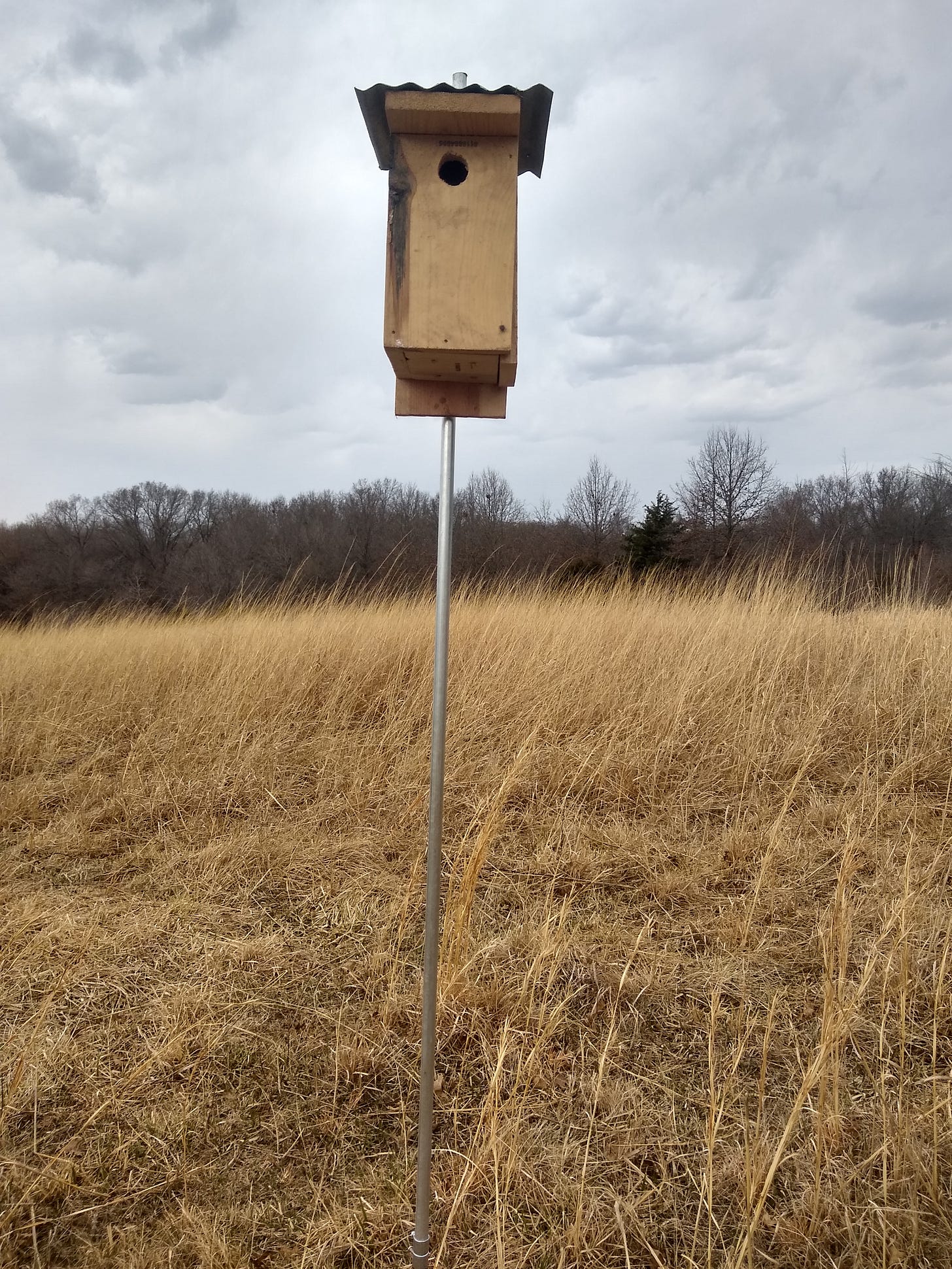
At around lunch-time, as the foreboding gusts of wind accelerate into ceaseless, straight-line gales, we have finished fertilizing, and the bulldozer’s constant chugging hum shudders to a quiet stop. Once again, the air vibrates with spring peepers and chirruping robins. I meet up with the dozer operator as he scampers down out of the cab and across the massive tracks, and we share a few words. He is surprisingly nimble for such a large man, dwarfed only by the steel mammoth that is an extension of himself. We discuss the hydrant location, the time-frame for completion, and the incoming weather. We are both cognizant of the approaching severe storms– something that with all the levers and fossil energy at his disposal he cannot control or manipulate. The violence of weather, of natural systems, is a chaotic violence, formed out of reaction to complex elements, injudicious in how it attacks. People are likely to die in this storm tonight. Limbs will break, and they will lie on woodland floors, a home for fungi and decomposers. As the sky dulls to a gray-blue bruise and the freshly scarred earth gathers wind-torn elm buds, he hops into his truck and leaves for the day.
I haul the rattling cart back along the thatchy prairie where tree sparrows flit between leafless shrubs. Fat robin flocks and murmurating starlings press into the wind and begin seeking shelter, their chirps a maddening crescendo underlain by the rhythm of creaking cottonwood limbs, swaying brambles, and rustling thatch. The air is hot and unsettling, but within the cool and still shelter of the goat barn we have our first batch of twin doelings. The new mother stamps at her bedding and they timidly nurse while the other nanny goats stand back and allow for a calm welcoming to the herd. Their world is one of nurture, and even the crowing roosters and argumentative boars are silent in this moment. Regardless, this is still the result of some amount of human dominance– getting to this point requires us as farmers to manipulate and control the reproduction of livestock, so that we can ultimately collect their milk to consume or sell.
We do what humans do– we intervene, we manipulate landscapes, and we harvest. This too can be an act of leverage whereby we apply a strategic amount of energy and control in order to design a somewhat self-sustaining system that mimics the natural world, or it can be a complete act of ecological violence fueled by finite, extracted imports. Finding a gentle path through the violence of wind and clanging machinery in a world that needs to eat and a complex network of globally connected ecologies feels very important, and very uncertain. Perhaps the chaos of our climate will prove to be fiercer than the most dominant of our planet’s aggressors– and those who direct armies and economies and fleets of extraction machinery will be forced to flee the controls and run for safety in due time. Between now and then, I will continue to do what humans do– care for land, intervening when it is strategic, leveraging the luxuries of our decadent age for the future survival of biological life once no one’s at the controls anymore.
I am prone to thunderstorm fever. We have dogs that hide, chickens that scatter, cows and goats that wearily sniff at the air and bed down to escape the tumult, but I often find myself running around at the peak of danger to secure items and resources, check on the animals, or just get a good view of the chaos to come. I like to watch the sky break wide and unleash the unfathomable power of colliding air-masses. I like to see the trees ripple as the gales roll along, and feel the uncontrolled force of elements outside of my authority. I don’t really want to lose my home or farm to a tornado, and I don’t relish the suffering that chaotic weather can inflict, but I do enjoy living on a planet where, in spite of our monumental efforts to control and manipulate our surroundings, nature bats last and hits hardest.
Unsecured boxes and buckets blow about the homestead. Row-cover is heaved into thorny limbs where it shreds. The rain begins to hit, sparse but hard and heavy drops, and in the safety of the barn, newborn doelings doze off, nurtured in the midst of relentless violence. A neighboring shed which has been in a stage of advanced dilapidation has collapsed. The boars once again cuddle tightly in their shelter, bracing themselves against the swirling, heaving winds, and newly opened blossoms on the Cornelian cherries scatter in the rising dust and stinging rain. Damp, exhilarated, and sore from the gentle work of farming, I watch the stormfront move on to other places as the air stills, the chorus of peepers rises again from the wet and reborn earth, and the distant peents of American woodcocks usher in the night.


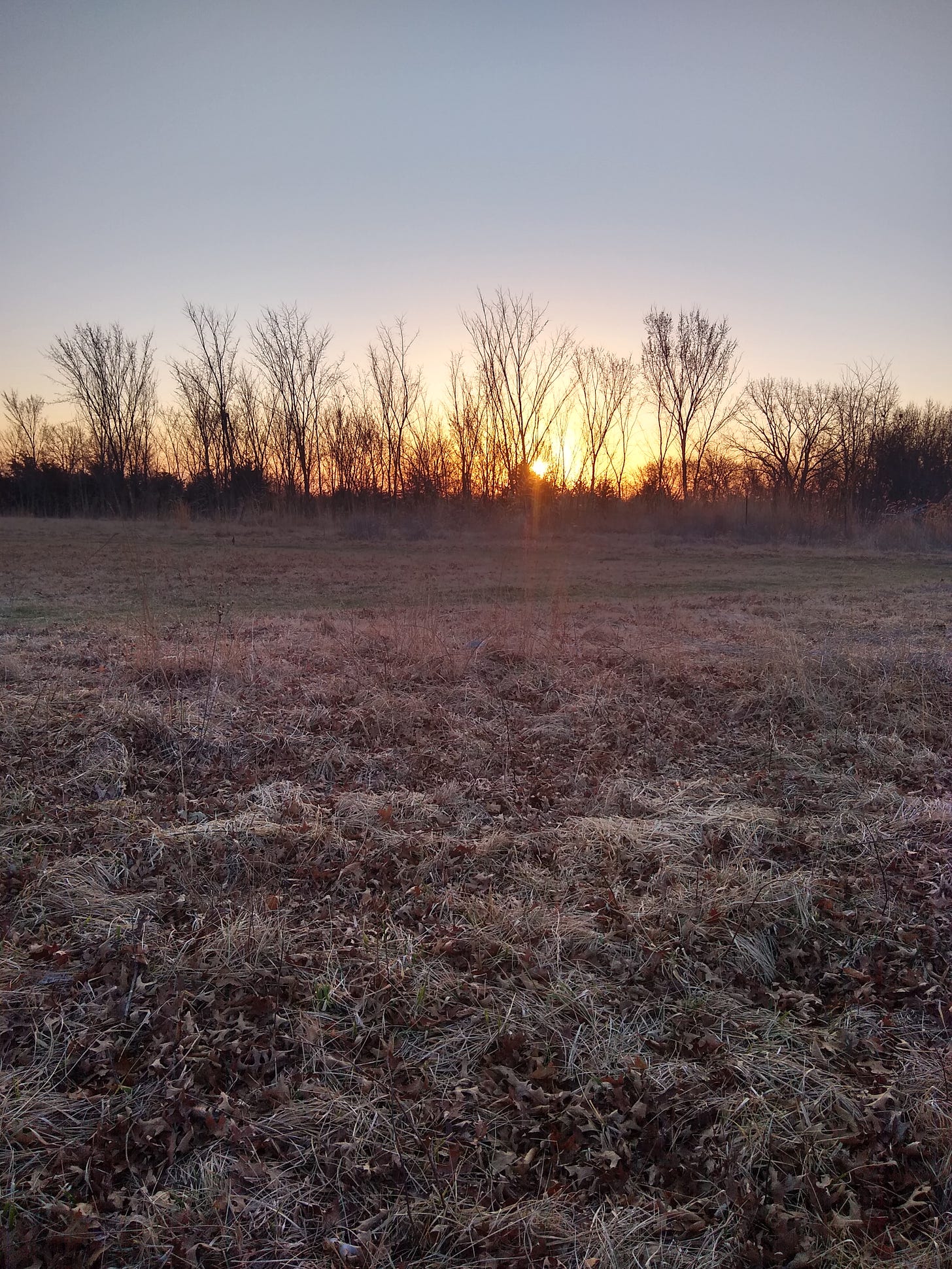
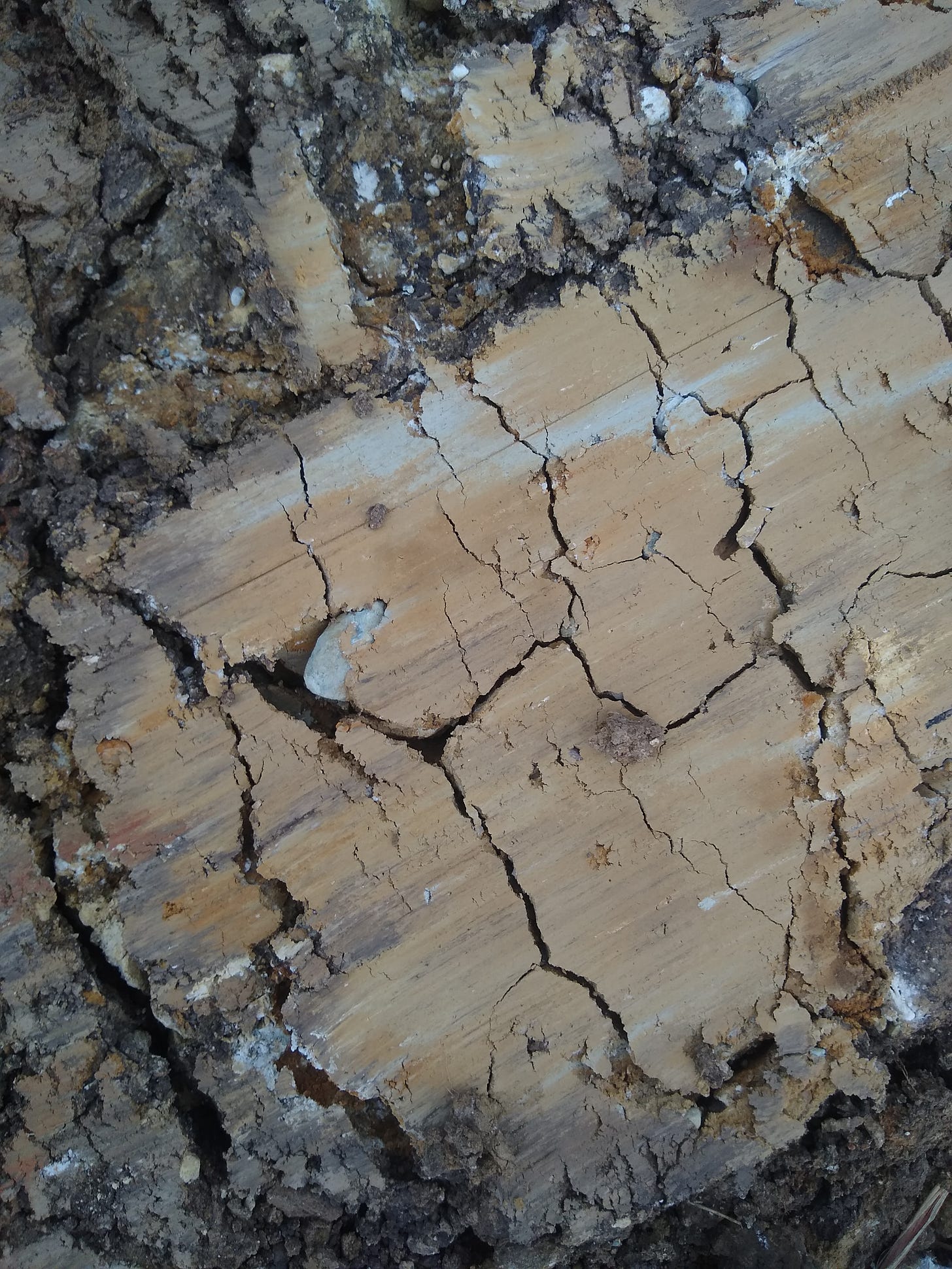
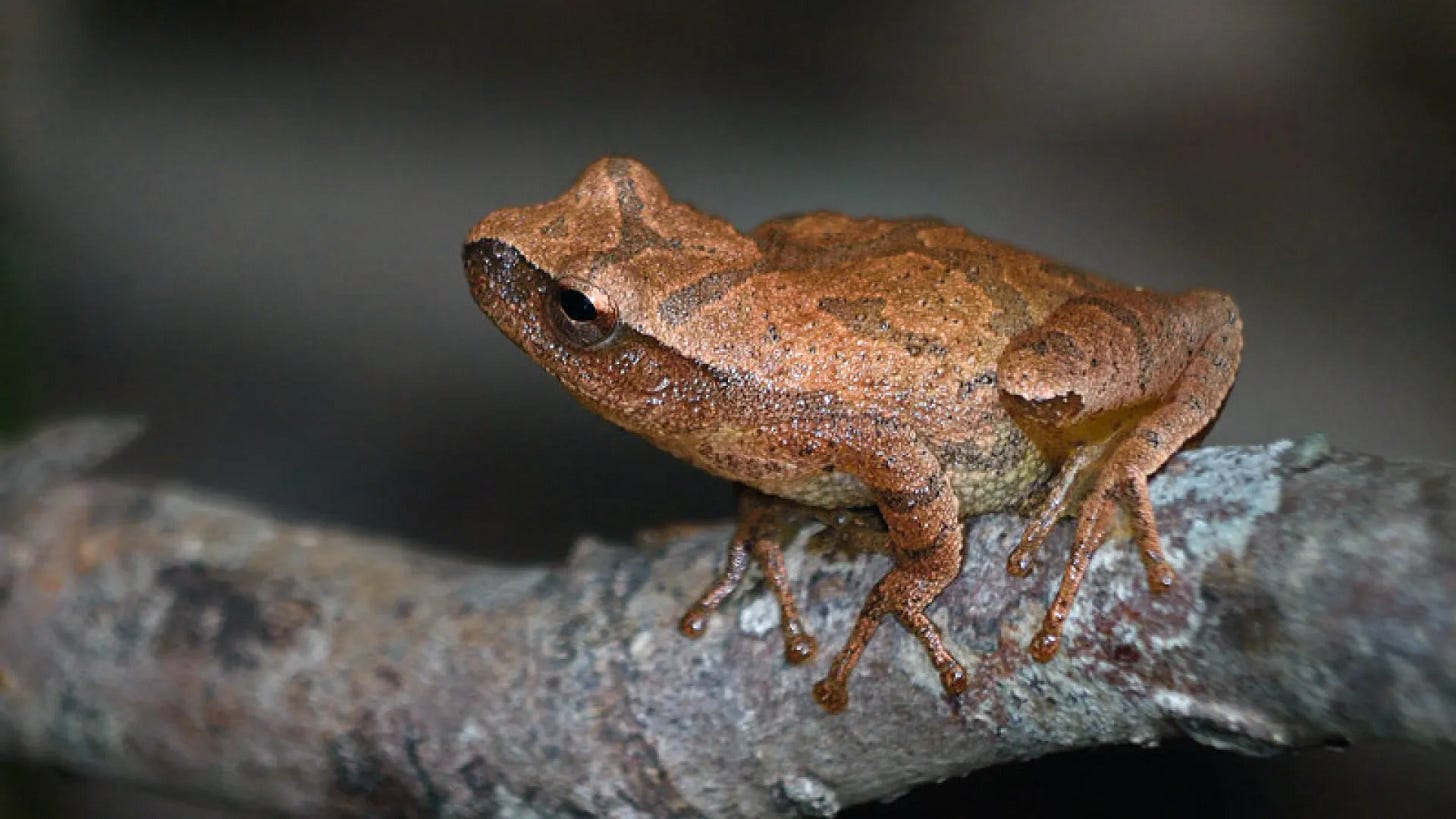
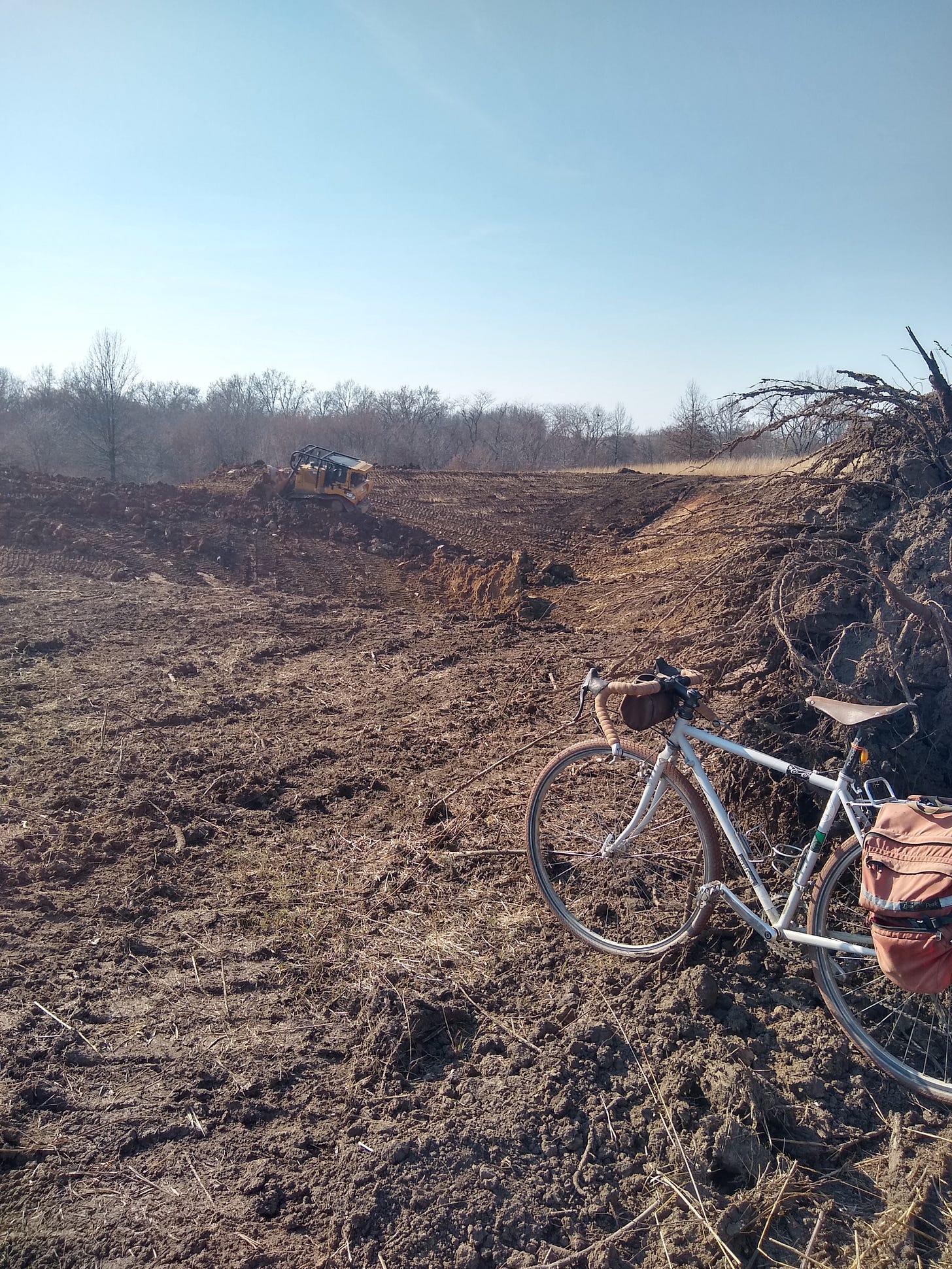
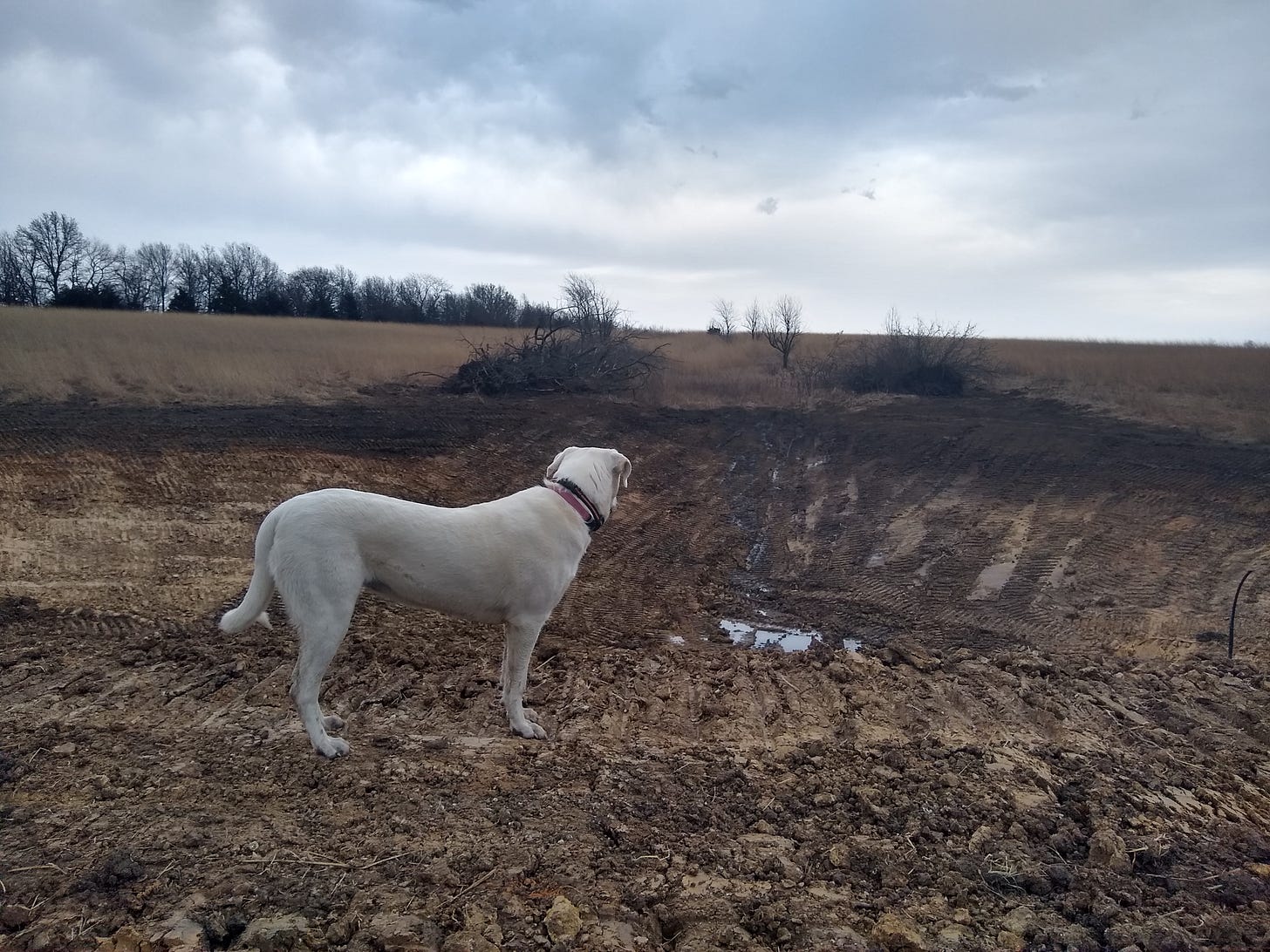
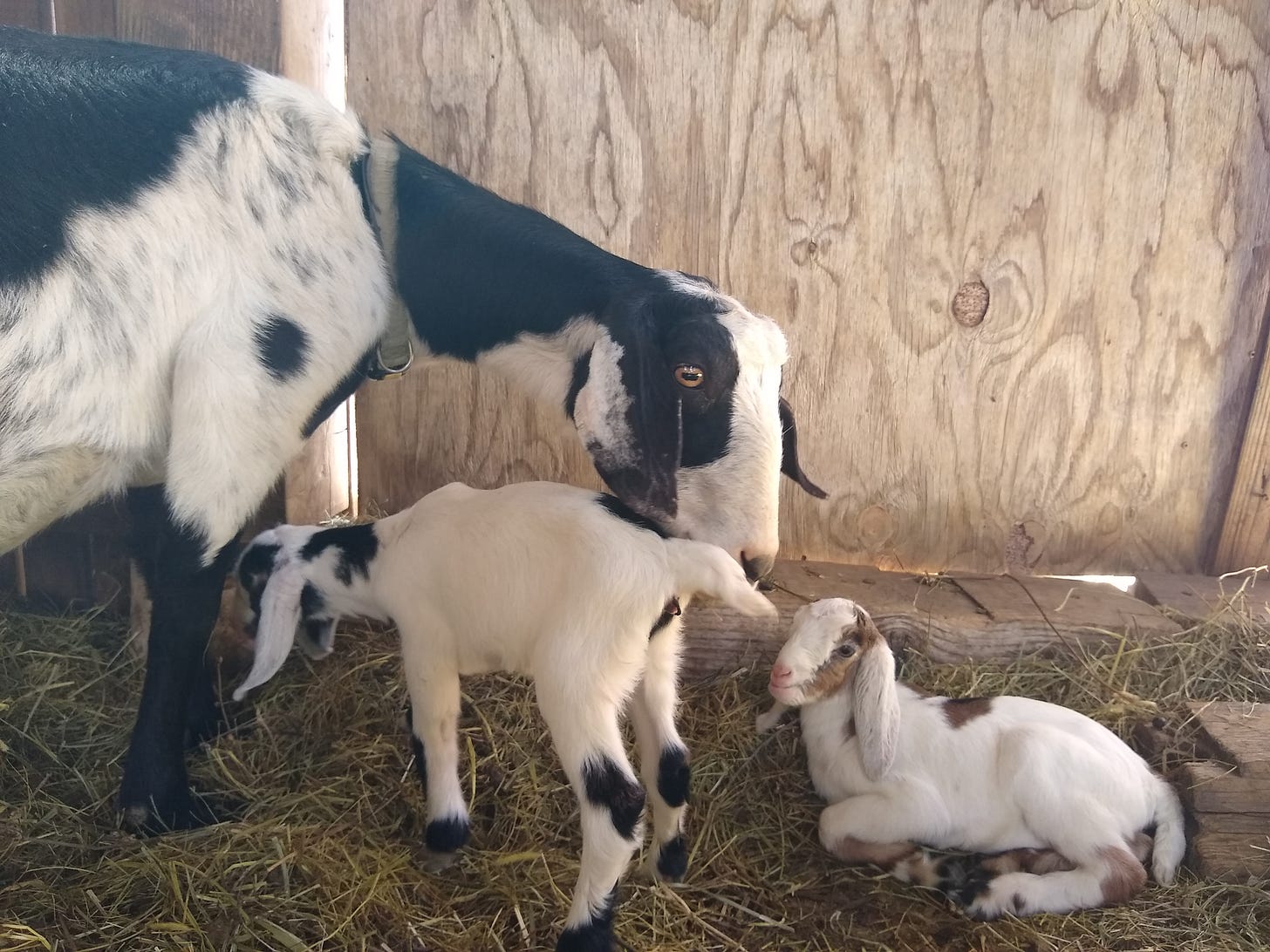

“… pollen … is essentially tree semen …”
Yes, it is! And I’m still chuckling.
A beautiful piece that brought me back many years.
Thanks, I needed that.
Oooooof what a read. Thank you for sharing this.